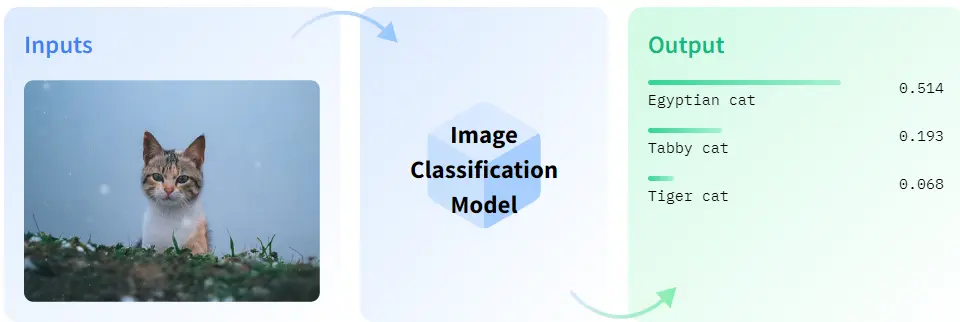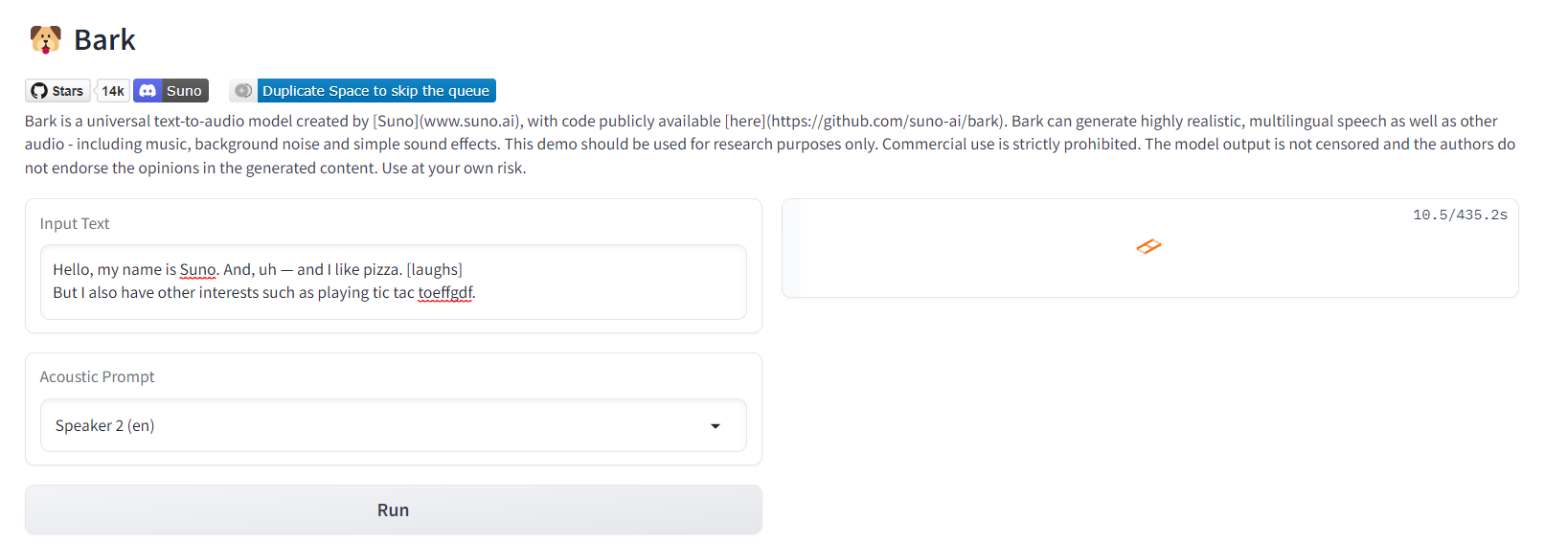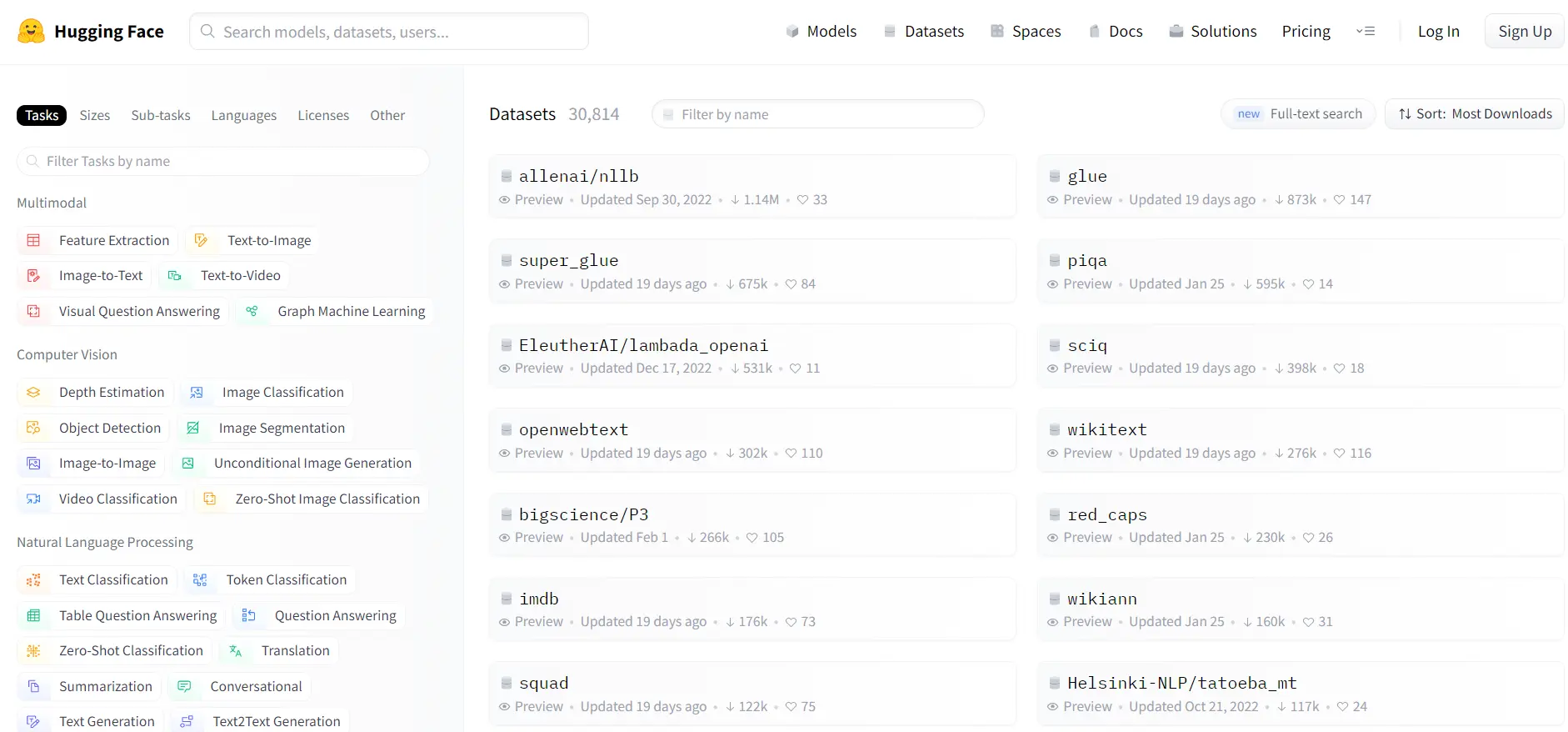Revolutionizing Computer Vision with Hugging Face

Table of Contents
- Introduction
- About Founders
- Key Features Provided by Hugging Face
- Applications of Hugging Face in Computer Vision
- Conclusion
Introduction
Hugging Face is an open-source platform that provides various tools and resources for natural language processing (NLP) and computer vision (CV).
The platform offers pre-trained models, data sets, and software tools to help researchers and developers build and deploy state-of-the-art AI applications.
Hugging Face's NLP tools are based on the Transformer architecture, which has revolutionized the field of NLP in recent years.
The platform offers pre-trained models for various NLP tasks, including language translation, sentiment analysis, and question-answering.
In addition to NLP, Hugging Face also offers tools for computer vision, including pre-trained models and data sets for Image classification, object detection, image segmentation, and facial recognition.

Figure: Image Classification Task
The platform's computer vision tools are based on deep learning frameworks such as PyTorch and TensorFlow, making them compatible with various AI development environments.
One of the key features of Hugging Face is its focus on open-source development and collaboration. The platform encourages users to contribute to its code base and share their models and data sets with the community.
This has helped create a vibrant ecosystem of AI developers and researchers working together to advance state of the art in NLP and computer vision.
About Founders
Hugging Face was founded by two French entrepreneurs, Clément Delangue and Julien Chaumond, in 2016.
Delangue and Chaumond met while working at the digital marketing agency, Mention, and bonded over their shared interest in natural language processing (NLP) and artificial intelligence (AI).
Delangue and Chaumond had experience working with NLP and AI but found that the existing tools and technologies were difficult to use and understand.
They decided to create their own company focusing on creating user-friendly NLP tools and technologies.
Key Features Provided by Hugging Face
Inference Endpoints
Inference Endpoints is a feature on Hugging Face that allows users to deploy their trained machine-learning models to a server for inference.
This feature simplifies deploying models to a production environment, making it easier for users to integrate their models into real-world applications.
Inference Endpoints work by providing a simple REST API that users can use to send input data to the deployed model and receive the model's output.
The API is designed to be flexible and customizable, allowing users to specify the input and output formats and customize the response based on their specific needs.
In addition to simplifying the deployment process, Inference Endpoints provides features for monitoring and scaling the deployed models.
Users can monitor the performance of their models and adjust the resources allocated to them to ensure optimal performance.
Dataset Provision
Hugging Face Datasets is a platform that provides access to a large collection of high-quality datasets for natural language processing (NLP) and other AI applications.
The platform offers various datasets, including text, speech, image, and video. These datasets are carefully curated, cleaned, and formatted to ensure their quality and usability.
Hugging Face Datasets provides easy-to-use APIs and tools for working with these datasets, making it easy for researchers and developers to access and use them in their applications.
Additionally, the platform encourages collaboration and contribution from the community, allowing users to share their datasets and contribute to improving existing ones.

.webp)
Figure: Segmentation Dataset Provided by Hugging Face
Private Hub
One of the key features of the Hugging Face platform is its focus on open-source development and collaboration.
The platform encourages users to contribute to its code base and share their models and data sets with the community.
This has helped create a vibrant ecosystem of AI developers and researchers working together to advance state of art in NLP and computer vision.
Hugging Face Spaces
Hugging Face Spaces is a platform for sharing and collaborating on machine learning projects.
It allows users to create public or private workspaces, which can be used to organize datasets, models, and code related to a specific project or research area.
Within a workspace, users can collaborate by sharing code, models, and datasets and communicate through a built-in messaging system.
Hugging Face Spaces also includes features for version control, code review, and project management, making it a powerful tool for teams working on machine learning projects.
Additionally, Hugging Face Spaces integrates with other Hugging Face tools, such as the Datasets and Models hubs, making it easy to share and access datasets and models within a workspace.
 Example Space for text-to-audio conversion
Example Space for text-to-audio conversion
Figure: Example Space for text-to-audio conversion
Pre-trained Models
The Hugging Face model hub provides access to a wide range of pre-trained models for computer vision tasks such as image classification, object detection, segmentation, and more. Some of the popular pre-trained models available for computer vision include:
- ResNet: ResNet is a family of convolutional neural network models widely used for image classification tasks. ResNet models have a deep architecture that enables them to learn complex features from images.
- VGG: Another family of convolutional neural network models that are commonly used for image classification. VGG models have a simpler architecture than ResNet models, but they are still very effective for many computer vision tasks.
- EfficientNet: A family of convolutional neural network models known for their efficiency and high performance. EfficientNet models use a novel compound scaling method that simultaneously optimizes the network's depth, width, and resolution.
- YOLOv5: A popular object detection model based on the You Only Look Once (YOLO) algorithm. YOLOv5 is known for its fast inference speed and high accuracy.
- Mask R-CNN: A popular instance segmentation model that can detect and segment objects within an image. Mask R-CNN is based on the Faster R-CNN algorithm and is known for its accuracy.

Figure: Pre-trained Models on Object Detection
In addition to these models, the Hugging Face model hub provides access to many other pre-trained models for computer vision tasks.
These models can be used as a starting point for developing computer vision applications or fine-tuned on specific datasets to achieve even better performance.
Applications of Hugging Face in Computer Vision
Hugging Face, a well-known player in natural language processing (NLP), contributes significantly to computer vision (CV).
The company has developed and made available a wide range of pre-trained computer vision models for tasks such as image classification, object detection, and segmentation.
These models have been trained on large-scale datasets and are designed to be fine-tuned on specific datasets to improve their performance on particular tasks, which include:
Pre-trained CV models
Hugging Face has developed and made available a wide range of pre-trained computer vision models that can be used for various tasks such as image classification, object detection, and segmentation.
These models have been trained on large-scale datasets such as ImageNet and COCO and are designed to be fine-tuned on specific datasets to improve their performance on particular tasks.
Hugging Face's pre-trained CV models include state-of-the-art models such as the EfficientNet and ResNet architectures and newer models such as the Vision Transformer (ViT).
The company also provides easy-to-use APIs and user interfaces for developers to quickly and easily use these pre-trained models in their applications.
Transformers for CV
Transformers are a type of neural network architecture that have been widely used in natural language processing tasks, but Hugging Face has also applied them to computer vision tasks.
Specifically, the company has developed a version of the Transformer architecture called the Vision Transformer (ViT) that has achieved state-of-the-art results on tasks such as image classification and object detection.
The ViT architecture processes image patches similarly to how Transformers process text sequences.
The model learns to extract important features from these patches and then uses them to make predictions about the contents of the image.
The ViT has proven an effective and efficient architecture for computer vision tasks and is quickly gaining popularity among researchers and practitioners.
Open-source CV software
Besides providing pre-trained models, Hugging Face offers an open-source software library called DALLE for computer vision.
This library includes implementations of a wide range of computer vision models and algorithms and tools for training and evaluating these models.
DALLE is designed to be easy to use and to facilitate collaboration between researchers and practitioners.
The library includes pre-trained models that can be used out-of-the-box for tasks such as image classification, object detection and tools for fine-tuning these models on custom datasets.
The library also includes a range of utilities and functions for working with images and other data types commonly used in computer vision.

Figure: Image of “Man walking on the street in the rain” using Hugging Face’s Dalle model
Research collaborations
Hugging Face collaborates with academic researchers and industry partners on research projects related to computer vision.
These collaborations help to advance the state of the art in computer vision research and practice and often result in new open-source software and pre-trained models.
By collaborating with researchers and practitioners from various backgrounds, Hugging Face can stay up-to-date on the latest developments in computer vision and contribute to the field in meaningful ways.
These collaborations help to ensure that Hugging Face's pre-trained models and software are always state-of-the-art and designed to meet the needs of a diverse range of users.
In summary, Hugging Face's contributions to the field of computer vision include the development of pre-trained models, the adaptation of transformer architectures for CV, the creation of open-source software for CV, and collaborations with researchers and practitioners.
These contributions are helping to democratize computer vision and make it more accessible to researchers and practitioners worldwide.
Conclusion
In conclusion, Hugging Face is an open-source platform that provides various tools and resources for natural language processing (NLP) and computer vision (CV).
The platform offers pre-trained models, datasets, and software tools to help researchers and developers build and deploy state-of-the-art AI applications.
The platform's NLP tools are based on the Transformer architecture, which has revolutionized the field of NLP in recent years. Hugging Face offers pre-trained models for various NLP tasks, including language translation, sentiment analysis, and question-answering.
Additionally, Hugging Face provides tools for computer vision, including pre-trained models and datasets for object detection, image segmentation, and facial recognition.
One of the key features of Hugging Face is its focus on open-source development and collaboration, which has helped create a vibrant ecosystem of AI developers and researchers working together to advance the state-of-the-art in NLP and computer vision.
Hugging Face also offers features such as Inference Endpoints, Dataset Provision, Private Hub, Hugging Face Spaces, and pre-trained models, making it a comprehensive platform for AI development.
Book a demo with Labellerr's sales team to see how ML teams can leverage the benefits of SAM in their computer vision development workflow using Labellerr.

Simplify Your Data Annotation Workflow With Proven Strategies
.png)


